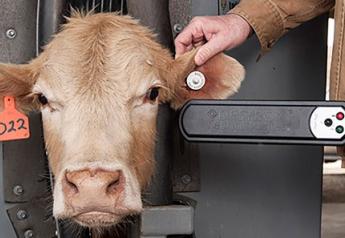Obamacare Here To Stay

There are provisions of the Affordable Care Act you should be complying with yet this year, and actions you might want to take in 2014 to lower your insurance liability.
If the budget and debt limit fiasco of mid October proves anything, it’s that Obamacare is the law of the land.
"Obamacare is here to stay," says Dean Heizer, an attorney with Heizer Paul Grueskin, LLP, Denver, Colo. And the quicker business owners accept that fact, the better position they will be in to deal with its ramifications.
True, the employer mandate, which would require large dairy operations with 50 or more full-time equivalent employees to insure those workers, is on hold until January 1, 2015.
But there are other provisions of the Affordable Care Act (ACA) you should be complying with yet this year, and actions you might want to take in 2014 to lower your insurance liability, say Heizer and Kevin Paul, also an attorney with Heizer Paul Grueskin LLP.
They presented the information during an October webinar hosted by Dairy Farmers of America for its members.
For starters, all businesses must provide employees with a notice of the Health Care Exchanges, which will provide links to the new insurance options. "This applies to all businesses, not just those with more than 50 employees," says Dean.
You must provide employees with one of two forms. If you do not offer employee health insurance, you must provide them a form stating such. If you do offer insurance, you need to provide another form stating that.
The forms should be available, in both English and Spanish, from your health insurance provider.
Unlike I-9 employee identification forms, you do not need to sign these documents or even keep copies. But you should keep some kind of record that you provided employees with the forms.
Rumors that you are subject to automatic fines of $100 per day per employee for not providing the forms are a complete myth, says Heizer. Those fines might only come about if you were sued by an employee, and the chance of that is slim and none, he says.
"But don’t use that as an excuse not to provide the forms," he says.
If you provide insurance to employees, you must also provide a "summary of benefit coverage" (SBC). You can obtain this document from your provider. If you are self-insured, however, you’ll have to pull the document together on your own.
If you have 50 or more full-time equivalent (FTE) employees, you will be required to provide insurance to employees or pay a penalty staring Jan. 1, 2015.
The first task is to determine whether you meet the 50 FTE threshold.
Start by counting your full-time employees, defined as those employees who work 30 or more hours per week or 130 hours per month.
Then, if you have part-time employees, add up their monthly hours and divide by 120. This will give you the number of FTEs. (Note: Seasonal workers, those who work for you less than 120 days per year, may be excluded from this count.)
If the sum of full-time and full-time equivalent workers is 50 or more, you are subject to the employer mandate.
The key is to do this math now so, if need be, you can make changes to your labor force before the mandate kicks in on January 1, 2015.
But there will be limits to what you can do, says Paul. "If you have two farms held by one business entity, then all employees will probably have to be counted in the total," he says.
Even if you have unrelated businesses—say you farm and your wife owns a hair salon—the employees will probably have to be totaled together if they are jointly owned. "If you have questions, check with your accountant or your attorney," says Heizer. "The time to work on this is now, because it could save you some significant dollars."
If you are over the 50 employee threshold, the ACA will require you to pay part of the premium of minimal levels of coverage or pay a penalty. The penalty is approximately $2,000 per FTE after you subtract the first 30 FTEs. So a large dairy with 60 FTEs would be subject to a $60,000 penalty. And to add insult to injury, the penalty is not tax deductible.
There are a couple of requirements for the insurance and premiums you provide. First off, the insurance must meet at the least the Bronze level of coverage, as defined by ACA. As the employer, such coverage must cover at least 60% of the actual medical expenses incurred by the employee. And the employee must not be required to pay more than 9.5% of his or her W-2 wage.
You must also offer insurance to all full-time employees and their children up to age 26. The caveat is that you do not have to pay any of the premium for child coverage.
If you are under the 50 FTE threshold, you do not have to provide health insurance. However, if you do, ACA offers a tax credit for some employers who provide the minimum level of insurance. The size of that credit will depend on the size of the business, its income and other factors. Unlike a tax deduction, however, this credit is subtracted directly from taxes owed—and can be used as an off-set for the cost of the insurance.
The federal and state health exchange sites will also provide "shop exchanges" that allow small business to shop for group plans. These may or may not offer cheaper premiums because it depends on the companies who bid to be on the exchanges, says Paul.
The Affordable Care Act also has an individual mandate which requires that your employees carry health insurance, even if you as an employer do not offer coverage.
Those individuals who don’t have proof of insurance will be subject to penalties on their income tax. The first year, starting in 2014, the penalty will be just $95/person. In 2015, it climbs to $325/person, and in 2016, to $695/person. "The penalties come closer and closer to the cost of the actual insurance," says Paul.
As an employer, you might want to provide a computer and internet access in your break room where employees can shop for insurance. While there have been computer access problems early on, it’s expected those glitches will lessen with time. The exchanges are also providing "navigators," i.e. real people, to help people find their way on the sites.
"In many cases, the cost of individual coverage is a lot less than people first thought," says Paul.
The open enrollment period for individuals runs from Oct. 1, 2013 through March 31, 2014. It’s critical individuals sign up during this period.
Finally, naturalized citizens and legally documented workers will be subject to the individual mandate and eligible for subsidized insurance. Undocumented workers are not, though they will still have access to emergency room care and some rural health centers.







